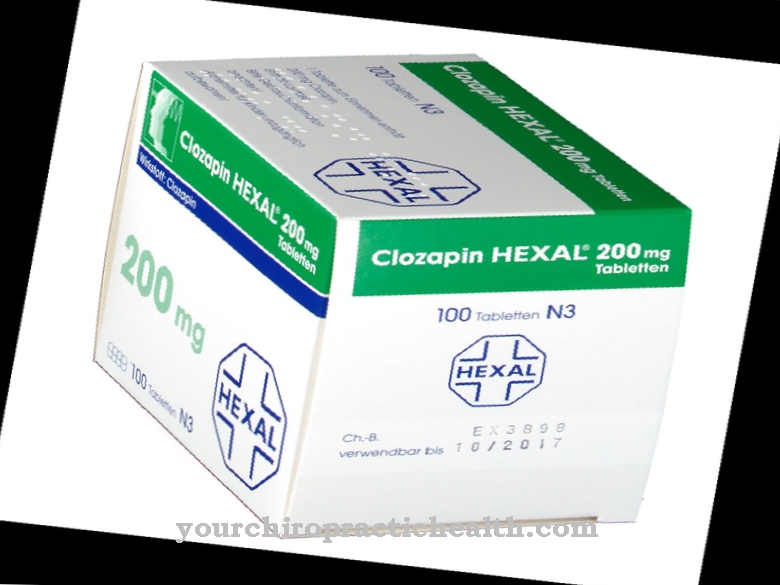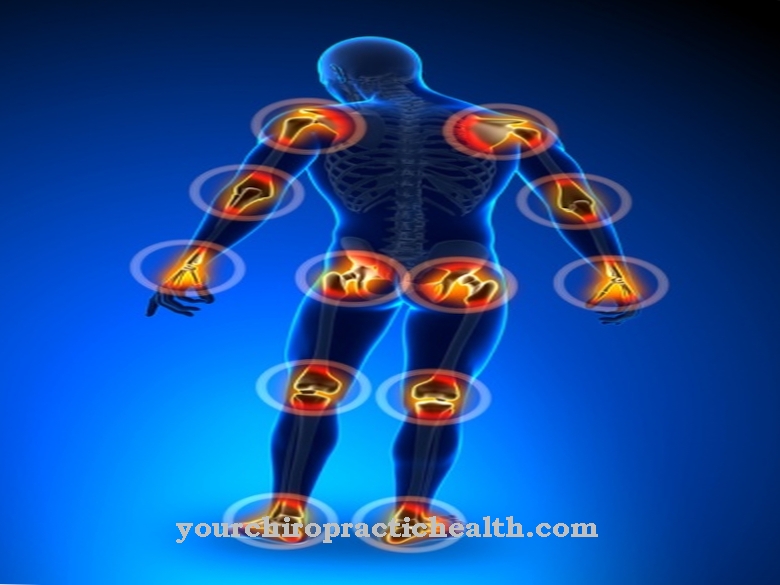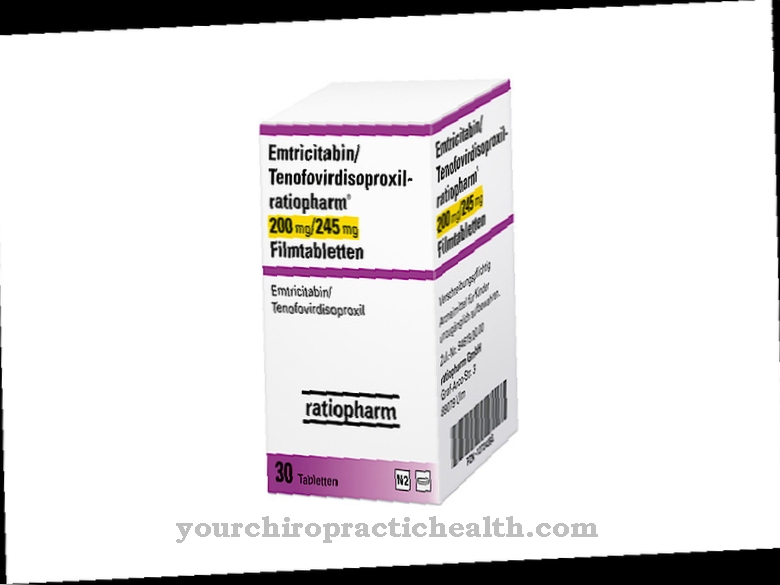As Cabergoline is the name of a medicinal substance that comes from the ergot alkaloids. The means comes u. a. against Parkinson's disease.
What is cabergoline?

Cabergoline is an ergoline derivative. The active ingredient is derived from the ergot alkaloids and belongs to the group of dopamine receptor agonists.
In the treatment of Parkinson's disease, cabergoline can be given as a second-line drug. However, it is usually only administered when other dopamine receptor agonists that do not come from the ergot alkaloids are not effective. In such cases, the prescription of cabergoline usually takes place individually. It is also possible to combine the remedy with levodopa. In this way, the symptoms that occur with Parkinson's disease can be alleviated.
Other areas of application for cabergoline are galactorrhea (abnormal flow of milk), an excess of the hormone prolactin and difficulties in weaning.
In addition to human medicine, veterinary medicine is also an important area of application for cabergoline. The preparation is used to treat malignant tumors of the mammary gland, pseudopregnancy and a purulent inflammation of the uterus (pyometra).
Pharmacological effect
One of the typical characteristics of Parkinson's disease is the lack of the messenger substance dopamine. In the process, the nerve cells in the substantia nigra, which are responsible for releasing the neurotransmitter, are destroyed for reasons that were previously unknown. However, humans need dopamine in order to be able to carry out their movements. The lack of dopamine becomes noticeable through complaints such as muscle tremors (tremor), muscle stiffness and restricted mobility. Over time, the symptoms continue to progress.
In order to be able to counteract the symptoms caused by Parkinson's disease, patients are given dopamine. This is usually the precursor molecule levodopa (L-dopa). In the body, levodopa is not only converted to dopamine, but also to metabolites that are ineffective, which is caused by various enzymes. The responsible enzymes must therefore be inhibited so that the dopamine level in the blood remains stable.
It is also necessary to stimulate dopamine receptors (D2) with agonists. Cabergoline is one of these agonists. Apart from its function in motor movements, dopamine also has an inhibitory effect within the pituitary gland on the secretion of the hyperphyseal anterior lobe hormone prolactin. By agonizing the D2 receptors, cabergoline can intensify this effect.
The half-life of cabergoline is very long at around 70 hours. With the help of cabergoline, it is possible to more effectively regulate the side effects of levodopa, such as movement disorders or fluctuations, which has been confirmed by several studies.
Because cabergoline can stimulate the hormone prolactin, it has an inhibitory effect on the milk production of the female mammary gland. It is therefore suitable for the treatment of excessively high prolactin values. These can be responsible for the loss of periods and ovulation. Following the birth process, the milk flow, for which prolactin is responsible, is stopped by cabergoline, if it is not desired for medical reasons.
Medical application & use
Cabergoline is primarily used for Parkinson's disease, which is a chronic neurological disease. It arises from degenerative changes within the extrapyramidal motor system. Such a disorder is also the restless legs syndrome, which can also be treated with cabergoline. The dopamine receptor agonist is used for symptomatic therapy.
Other indications for cabergoline are hyperprolactinemia (excessively high prolactin levels) during pregnancy or breastfeeding and weaning. During this process, the baby is weaned from breast milk step by step.
Since cabergoline can cause pathological changes to the heart valves, the recommended maximum dose is limited to 3 milligrams per day.
You can find your medication here
➔ Medicines to calm down and strengthen nervesRisks & side effects
Some undesirable side effects may occur when taking cabergoline. Because the drug is very often used together with levodopa, it is not always possible to say exactly whether the side effects are due to the drug itself or the excess dopamine.
The most common side effects include movement disorders, being forced to move, drop in blood pressure when changing body position, dizziness and changes in the heart valves. Other negative side effects are sleep disorders, severe fatigue, effusions of the pleura, angina pectoris attacks, pulmonary fibrosis (transformation of the lung tissue), digestive problems, vomiting, edema of the limbs, inflammation of the stomach, headache, flushing of the face, nerve discomfort and confusion and delusions.
If cabergoline is given for a short time during the first weaning to inhibit the flow of milk, a drop in blood pressure is possible. Abdominal pain, nausea, headache and attacks of dizziness can also occur at times. If the patient shows behavior problems such as gambling addiction, compulsive eating, compulsive spending of money or an abnormal sexual urge, a change in therapy may be necessary.
Cabergoline should not be administered at all if the patient is hypersensitive to the drug, suffers from changes in the heart valves, lung problems, fluid accumulation in the pleura, or if metabolic diseases such as eclampsia develop during pregnancy.
Cabergoline is generally not permitted for children. To date, there is too little experience with their treatment with the active ingredient.
Therapy with cabergoline can also interact with other drugs. We advise against taking it together with other dopamine receptor agonists such as the antiemetic metoclopramide and neuroleptics, because these substances reduce the effectiveness of cabergoline. On the other hand, if the patient takes antifungal agents such as ketoconazole or macrolide antibiotics at the same time, this hinders the breakdown of the drug.









.jpg)



.jpg)



.jpg)







.jpg)


